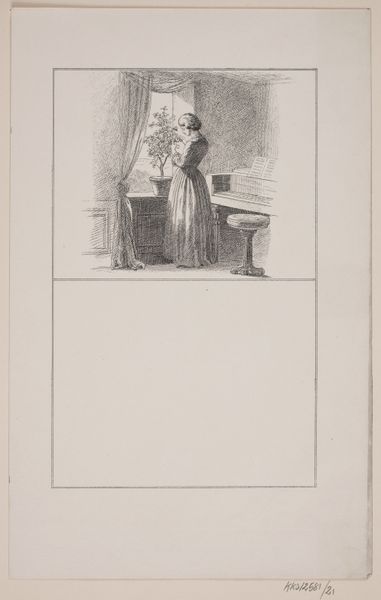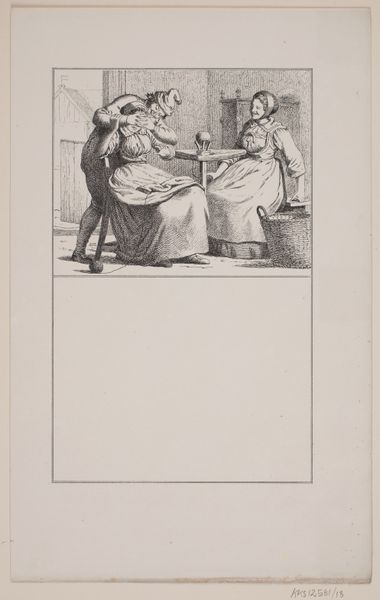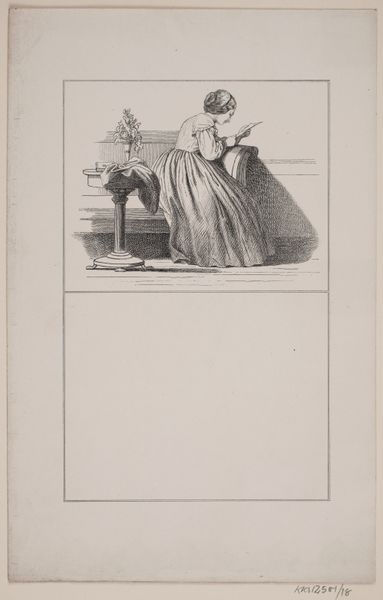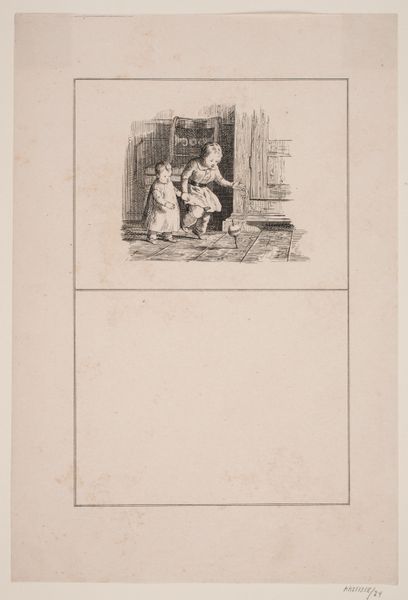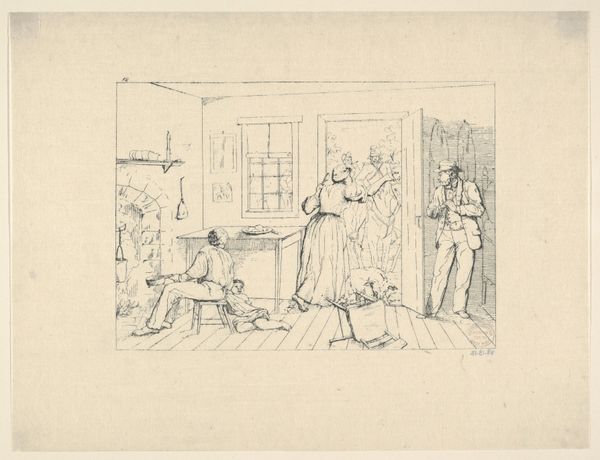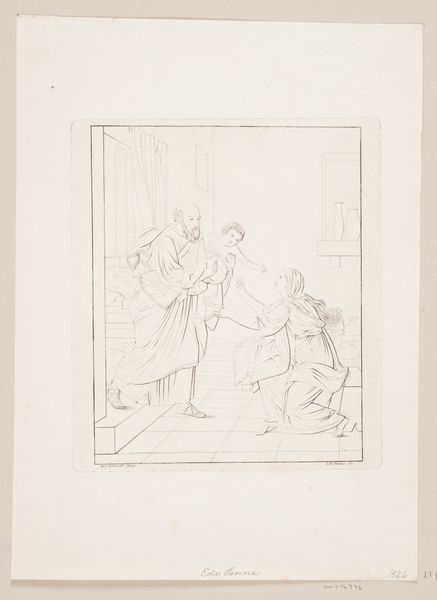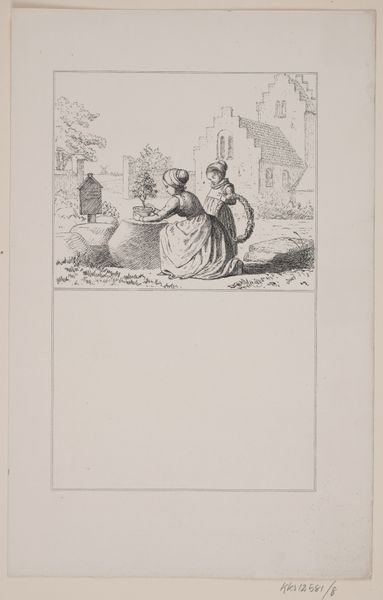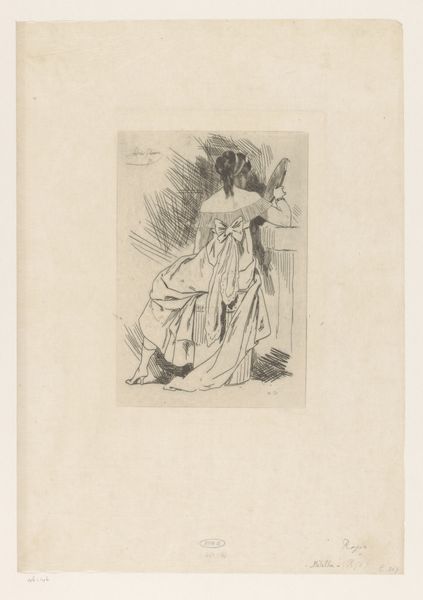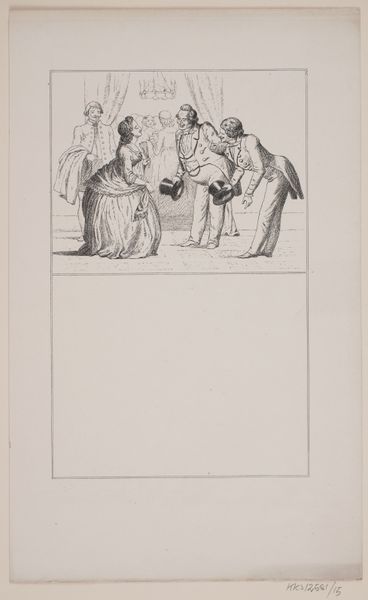
lithograph, print
#
lithograph
# print
#
landscape
#
figuration
#
line
#
genre-painting
Dimensions: 262 mm (height) x 165 mm (width) (brutto)
Curator: We're standing before Adolph Kittendorff's "Middagshvile," created in 1862. It's a lithograph, currently residing at the SMK, Statens Museum for Kunst. Editor: The immediate impression is one of domestic tranquility—or perhaps not so tranquil. It’s spare, yet filled with labor. Look at the tight linework forming the figures. Curator: It captures a very specific social moment. Kittendorff was working within a growing interest in genre painting, portraying everyday life. There's an undercurrent here, isn't there? This is labor visualized—consider the sick figure against those who continue to work. Editor: Exactly. Notice the clear depiction of tools in the background—simple items arranged for living, or sustenance, but still undeniably crafted. What kind of print is this, really, and how would its making compare to what we see happening inside the image? How was the work of making the image viewed versus the labor portrayed? Curator: That division speaks volumes. Genre painting, at the time, was a means of exploring national identity, representing the lives of ordinary people, usually farmers and laborers, within an idealized context. Think about how printed images made artwork and these 'scenes of labor' more accessible, thus broadening an audience. Editor: Yet, there's nothing idealized here. Look at the way labor itself becomes material – the weight of that pot the mother handles, the weary lines in the figure’s face on the bed. You feel the process. The lithograph itself would have been a painstaking process of crafting. Curator: And in those carefully placed lines, the artist is reflecting—or even commenting—on class dynamics. He acknowledges both the hardships and quiet dignities. Lithography provided him with a broad palette for social narrative. The democratization of the image! Editor: Democratization but also industrialization. Are we celebrating a craft, or a moment in the industrialized production and consumption of images? It invites us to consider who could afford such an artwork. Curator: A keen question about the circulation of value. Thanks for drawing attention to the social conditions surrounding its production and consumption as both artwork and social document. Editor: Indeed. A reminder that art, like life, is wrought from materials, processes, and unceasing work.
Comments
No comments
Be the first to comment and join the conversation on the ultimate creative platform.
